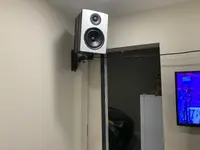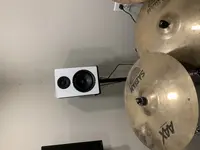Yep. Transmission is note directional. There is always coupling, the question is the amount. An isolated panel, with green glue, foams or even air gets this isolation compromised when the soft compliant coupling is overridden by something strong and rigid. Worse, the more you have to use to make it suitable for vertical fixings, working against gravity, negates the isolation. In fact, you van hear this if you knock your knuckles on a wall. In my home I have some walls that are one layer of plasterboard onto 75x50 timber. The builder was very enthusiastic with the screws. The sound, mid point between the studs is very different. The studs making that joint sound different. In my studio with three layers and no glue, the sound is totally different. I guess it’s like a drum skins but far less movement. Green glue is a sound shock absorber. I like your amazing quest for the mega door, but I’d bet the weak links are however is slides. Better seals mean more friction, and more friction suggests to me that if the sealing is good, you can’t open it. This was the reason for my earlier comment that asked if it moved across then got compressed was because of this. Rod Gervais in his book mentions windows and points out that if you have them, this is usually the weak link. No point making walls better than the windows? The law of diminishing returns also plays a part.


